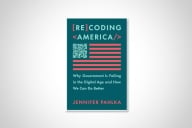You have /5 articles left.
Sign up for a free account or log in.
When The Girl was looking at colleges, I took her on a walking tour of Princeton. It’s a lovely campus, and it’s only about 45 minutes from where we live. It’s on a train line that makes it easy to get to New York City or Philadelphia without a car, and it’s academically worthy of her. (TG is blisteringly smart, with the credentials to prove it.) She enjoyed the tour well enough but let me know she had no intention of applying. It was too close to home, and there was no way she’d get in anyway. Statistically, she was probably correct. She left the state to find her academic home.
I mention that to give some context to my response to Ryan Craig’s piece in Inside Higher Ed last week advocating that Yale open a campus in Houston. Craig’s argument is that Houston is a large and fast-growing city (true), it has a smaller higher education footprint than one would expect for a city of its size (I don’t know, but I’m willing to accept this for the sake of argument), and that only a big-name university like Yale could make enough of a splash to change the conversation.
Oddly, Houston Community College goes entirely unmentioned in the piece. According to the College Scorecard, Houston CC has roughly 48,000 students. Yale has 4,700 undergrads, or slightly less than one-tenth of what HCC has. As a public institution, HCC is accountable to the voters of Houston; as a private institution, Yale is accountable only to its trustees. A Texan version of The Girl would have little to no chance of being admitted to Yale but would have no problem being admitted to HCC.
Craig’s piece takes an existing “conversation” around higher education as a given and, in so doing, reinforces it. If only the top 20 or so universities matter, as he assures us they do, then the only hope for higher education is that they start sprouting branch campuses. After all, if they can do it in Qatar, they can do it in Texas.
To which I say, it’s time to change the conversation. Talk to students, and to prospective students. Talk to local employers.
Craig offers a thumbnail demographic profile of Houston. By his numbers, the county is 42 percent Hispanic, 31 percent white, 19 percent Black and 8 percent Asian. That didn’t sound like Yale to me, so I checked its stats: 35 percent white, 24 percent Asian, 15 percent Hispanic, 9 percent Black, with double digits of foreign students. HCC, by contrast, is 36 percent Hispanic and 27 percent Black, which comes much closer to mirroring the county.
The more fundamental point, though, is what Yale sells. It sells exclusivity. It draws its value largely from the fact that most applicants don’t get in. If the proposed branch campus were to maintain the same standards, vanishingly few Houstonians would get in. Houston Community College takes the top 100 percent of its applicants. Yale offers generous financial aid to the very few students it takes, but if you don’t get in, financial aid is purely theoretical. HCC strives to be affordable even to students who are struggling to make ends meet.
If my point about exclusivity is incorrect—Akil Bello calls universities like it “highly rejective”—then I would expect to see Ivies and similar places expand to capture much more of the demand for them. That doesn’t happen. In fact, if one of them did, its rejection rate would suffer (!), and its prestige would slide accordingly. I can easily be proven wrong by any of the Ivies throwing open the doors and opening huge new campuses across the country. I’m not holding my breath.
What Craig dismissively terms “nonselective, non-brand-name” higher education is what is, and will be, available to most Americans. It’s where most working Americans with college degrees got their degrees. It’s where most companies do the bulk of their hiring. It’s the less glamorous but far more important part of the economy.
Those of us who pay attention—yes, there’s a conversation here, too—know that community college enrollments are usually countercyclical to hiring. The short, sharp shock of the pandemic was an exception, but now we’re in a classic employment-driven enrollment dip. It’s frustrating, but if you talk to students, it’s understandable. When the job market is strong, the opportunity cost of college goes up. Many students will choose to make money when they can, given the needs of family and the ever-more-expensive housing market; when they can’t, many will find their way back to college.
The kernel of truth in Craig’s piece is that the highly rejective universities occupy much more space in elite discourse than their enrollments justify. But that’s a bug, not a feature. The answer is not to write off most colleges and beg the Ivies to open a few outposts. It’s to bolster the public options that already exist in most of the country, including places much smaller than Houston. Princeton and Yale are lovely, and they serve a purpose. But if we care at all about the majority of Americans, they’re irrelevant. It’s the conversation that needs changing.



